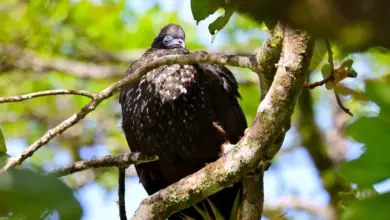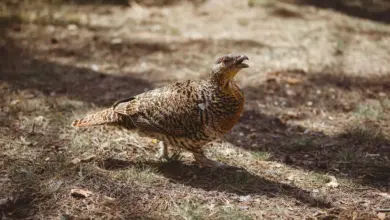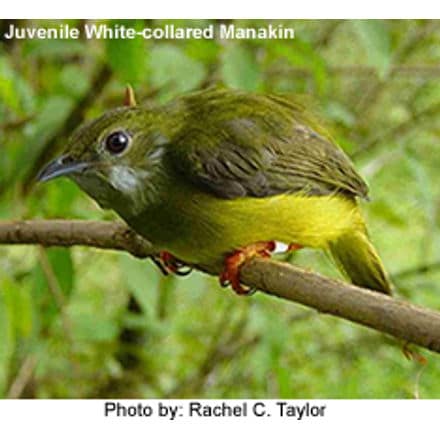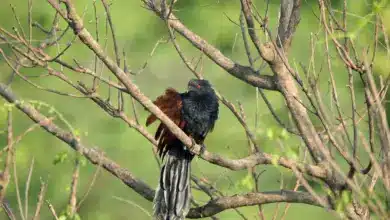Greater Green Leafbirds
The Greater Green Leafbirds (Chloropsis sonnerati) – also known as Greater Leafbirds or Malachite-shouldered Leafbirds – are small, colorful songbirds that were named for the fact that their mostly green plumages blend in well into their tropical habitat, where the green leaves of the canopy provide a perfect camouflage for these birds.
However, leafbirds that are stressed will shed most of their colorful feathers. This adaptation may have evolved as a way of confusing predators. Captured birds under stress will do the same.
Alternate (Global) Names
Chinese: ???? … Czech: Sýkavka vetší, sýkavka v?tší … Danish: Smaragdbladfugl … Dutch: Diksnavelbladvogel, Diksnavel-bladvogel … Finnish: Viherlehvi … French: Verdin de Sonnerat … German: Dickschnabel-Blattvogel … Indonesian: Burung daun besar, Cicadaun Besar … Italian: Fogliarolo verde maggiore, Verdino maggiore … Japanese: ookonohadori, ??????? … Malay: Burung Daun, Burung Daun Besar … Norwegian: Smaragdbladfugl … Polish: zielenik duzy, zielenik du?y … Slovak: zelenácik velkozobý … Spanish: Verdín de Sonnerat, Verdín Grande … Swedish: Smaragdbladfågel … Thai: ??????????????????
Distribution / Range
The Greater Green Leafbirds occur naturally in Brunei, Indonesia, Malaysia, Myanmar, Singapore and Thailand.
They inhabit subtropical or tropical moist lowland and mangrove forests, mostly remaining in old-growth forests, but are also found in secondary forests and along forest edges.
They usually remain at the canopy level, jumping between branches or flying from tree to tree.
Greater Green Leafbird (Chloropsis sonnerati)
- Chloropsis sonnerati sonnerati (Jardine and Selby, 1827) – Nominate Race
- Range: Occur naturally on the island of Java in Indonesia, where they are rare.
- Chloropsis sonnerati zosterops (Vigors, 1830)
- Range: Southern Burma (Republic of the Union of Myanmar) in central Tenasserim and southwestern Thailand south to Sumatra and satellite islands, east to northern Natuna Islands and the island of Borneo located north of Java Island, Indonesia. This race is fairly common in suitable habitat.
- [parvirostris] from Nias – an island off the western coast of Sumatra, Indonesia. This race was merged with ssp. zosterops, as its bill characteristics fall within range of variation of the mainland populations.
- Range: Southern Burma (Republic of the Union of Myanmar) in central Tenasserim and southwestern Thailand south to Sumatra and satellite islands, east to northern Natuna Islands and the island of Borneo located north of Java Island, Indonesia. This race is fairly common in suitable habitat.
Leafbird Information … Leafbird Species Index … Leafbird Species Photo Gallery
Description
The medium-sized leafbirds have forked, brush-tipped tongues and fairly hefty, straight to lightly down-curved bills with stiff, hair-like feathers at the base that protect their eyes from the legs and wings of their insect prey.
The plumage is mostly green. Males have a black throat / bib.
Females lack the black throat patch / bib. Her throat is pale greyish-green instead, with a blue “moustache” on the sides. There is a hint of blue on the top of her head. She has yellow eyerings.
Immature birds look like duller versions of the females.
Similar Species
Leafbirds resemble bulbuls, but can be identified by their brighter plumages.
The Greater Green Leafbird resembles the Lesser Green Leafbird, but can be distinguished by the yellow throat and eye rings of the female. The male Lesser Green Leafbird has a yellow border along the black throat patch, which the Greater Green Leafbird lacks.
Nesting / Breeding
Leafbirds build open cup-shaped nests out of fine stems, leaf parts and rootlets.
These nests are typically placed on the ends of branches near the tree crown; although some may hang from thin horizontal shoots of trees, or they are attached to a pair of vertical twigs.
The average clutch consists of 2 – 3 pinkish eggs. The incubation lasts about 14 days and is performed by the female alone, while the male feeds the brooding female. Even though unconfirmed, it appears likely, that the male also helps raise the young.
Diet / Feeding
Leafbirds typically forage alone or in pairs in the subcanopy; but some species may occasionally join mixed feeding flocks, while other species defend their feeding territories.
They feed on mostly insects, as well as taking fruits, berries and nectar.
Insects: Their long sharp beaks are curved down slightly and a brush tipped tongue, helping them to pick insects from the bark and leaves of trees. They will also pursue flushed prey into the air or down to the forest floor.
Fruits: They often visit fruiting fig trees, but will also take other available fruits in their range. Usually, leafbirds swallow pieces of fruit whole. If this isn’t possible, they will pierce the fruits with their beaks and let the juices leak into their mouths.
Nectar: Their spiked tongues are well adapted for taking nectar from tubular flowers. Like hummingbirds, they will hover in front of a flower while retrieving the nectar. In the process of feeding, the flowers benefit from cross-pollination as the leafbird’s head becomes covered with pollen and spreads from flower to flower.
As they move to the next flower, the pollen is deposited on the next flower, which is then able to produce seeds and fruit. Many native plants rely on them for pollination and would not be able to exist without the “services” inadvertently rendered by the leafbirds.
Calls / Vocalizations
Their attractive song is described as an ascending whistle chee-zi-chee.





